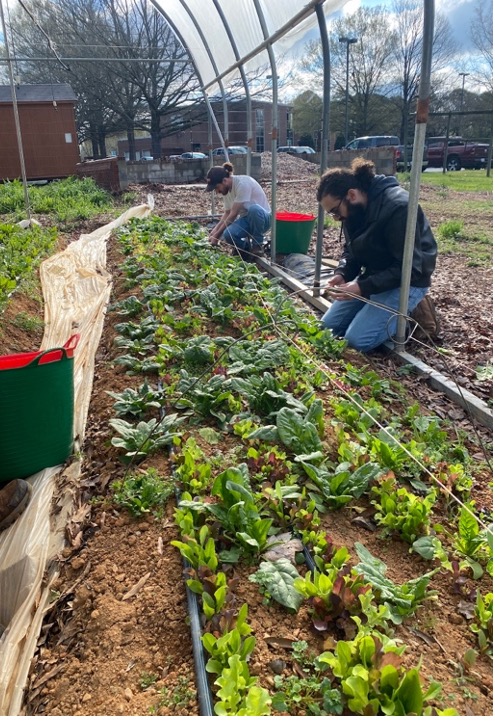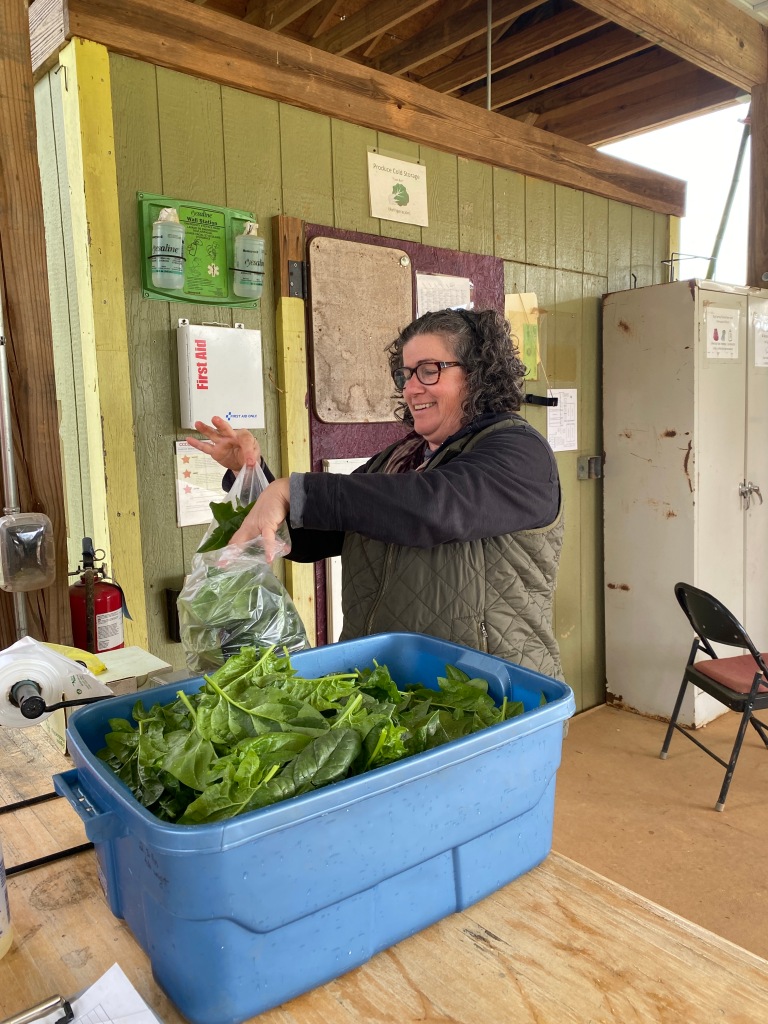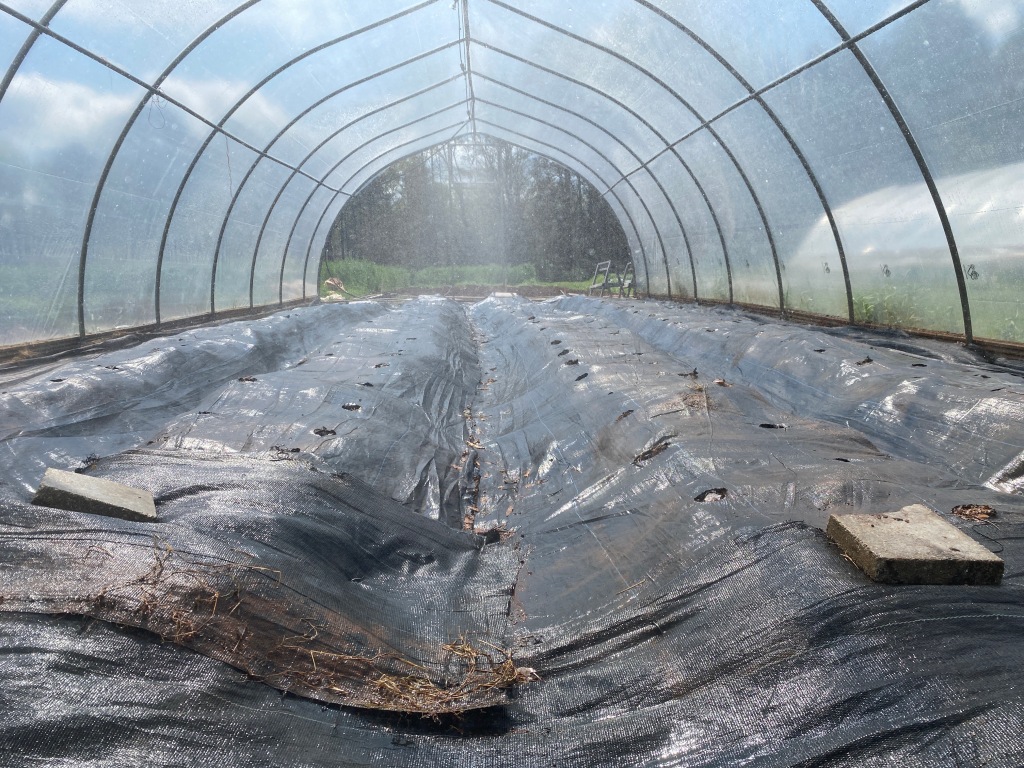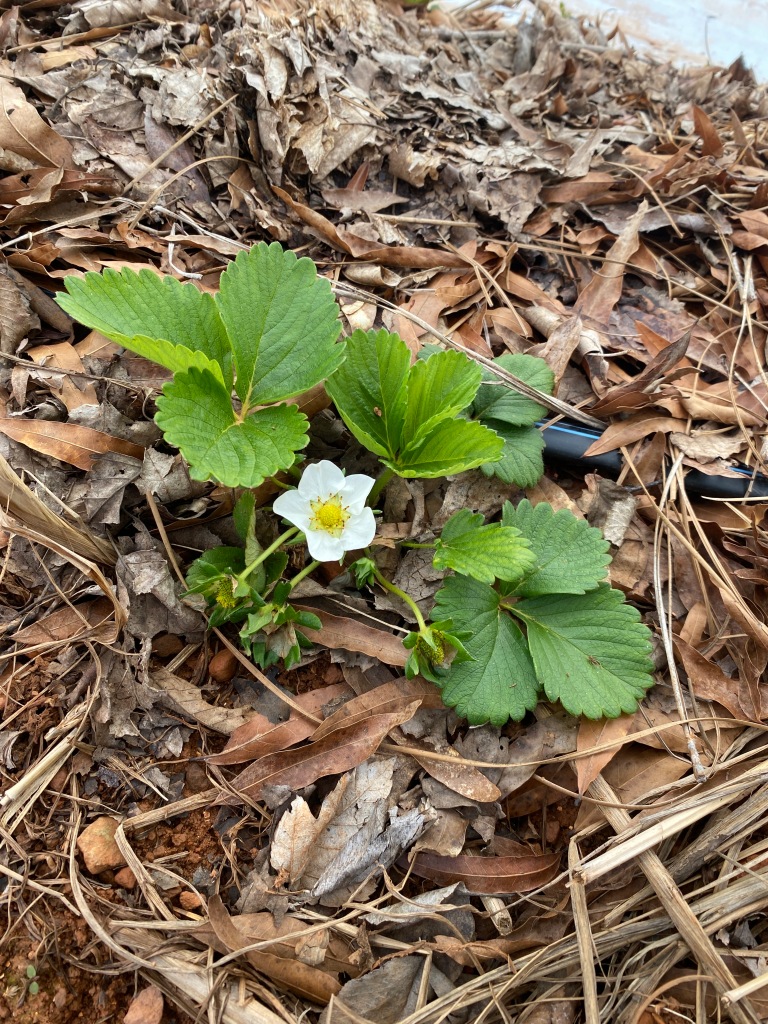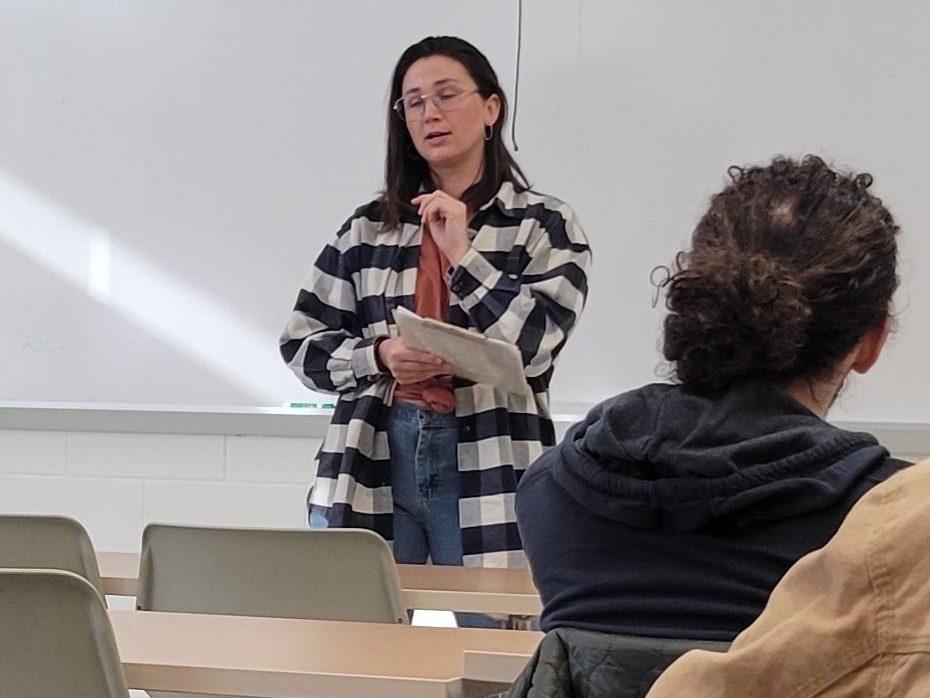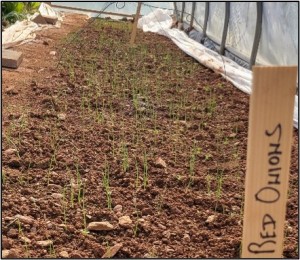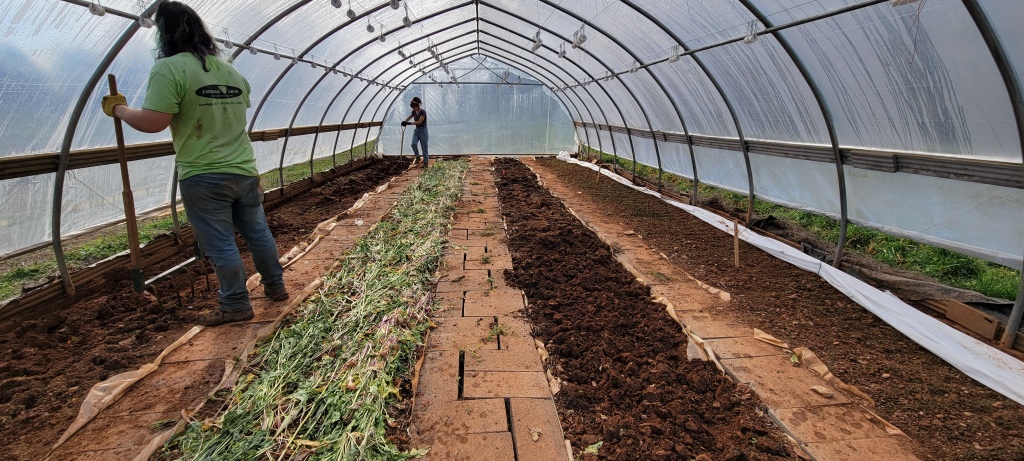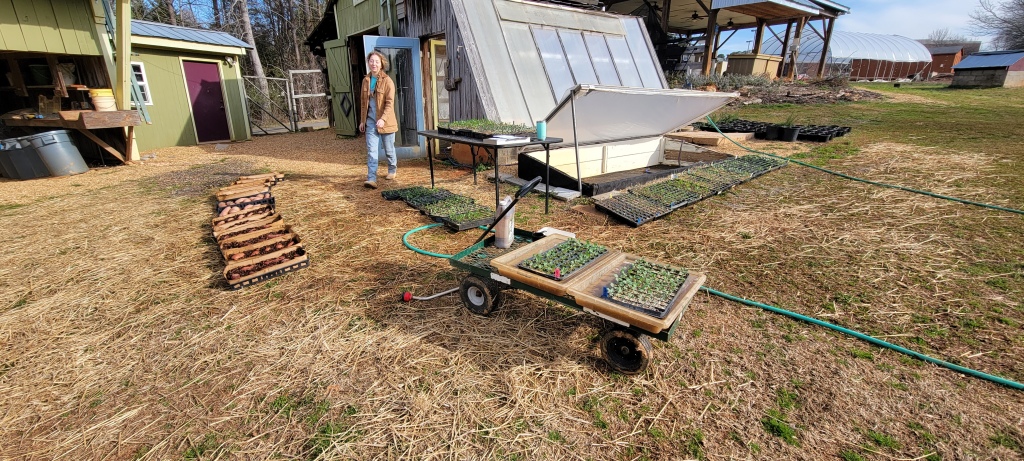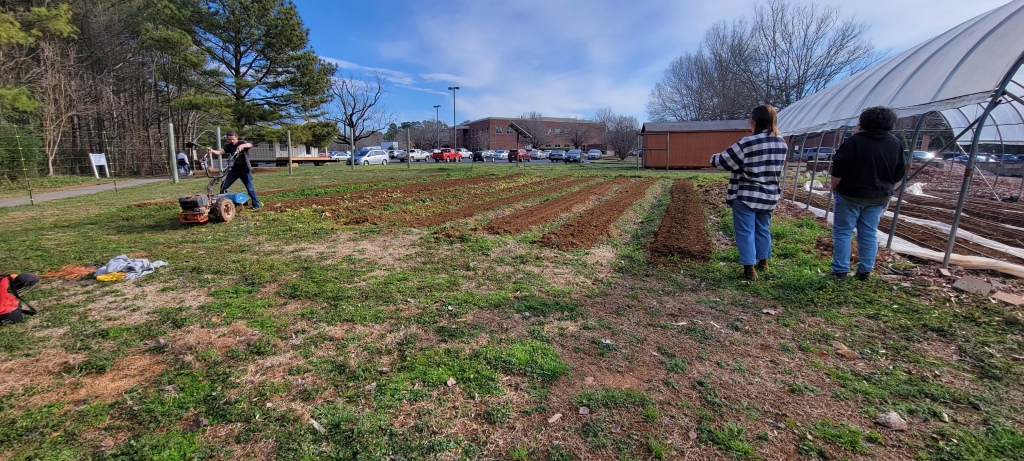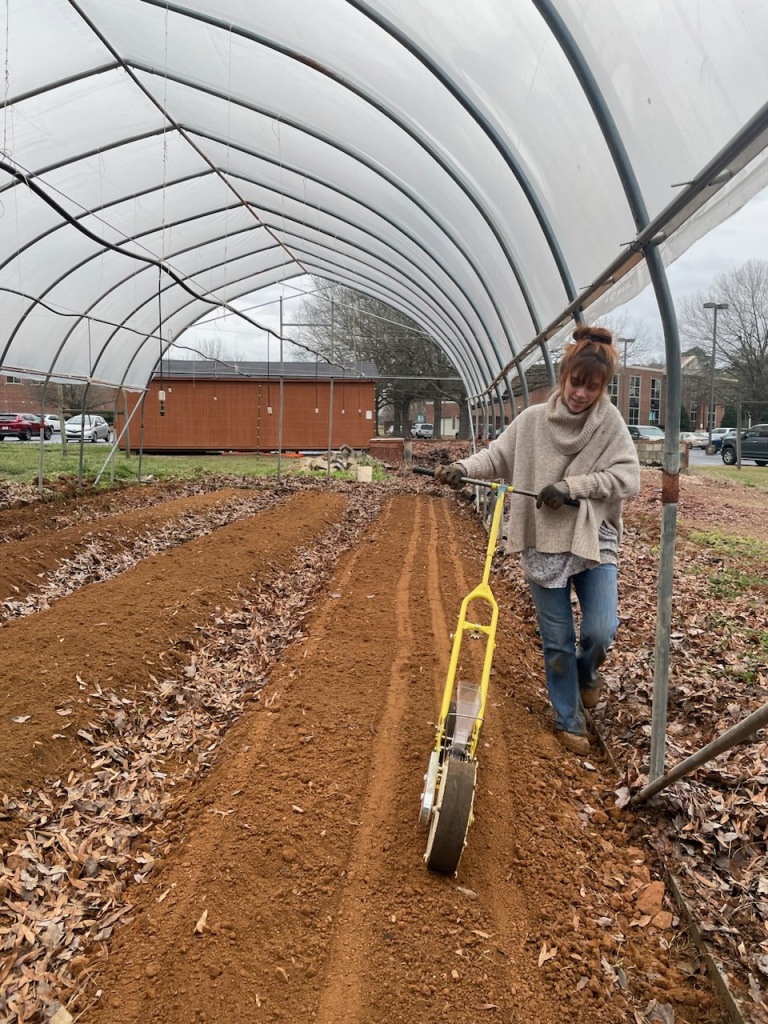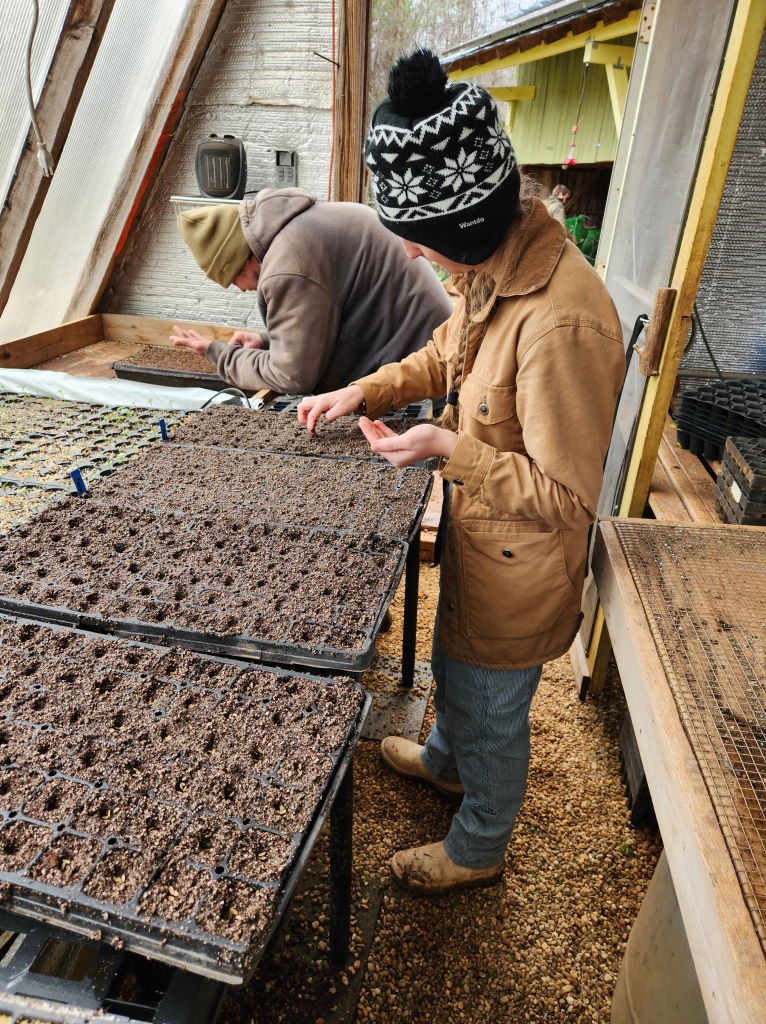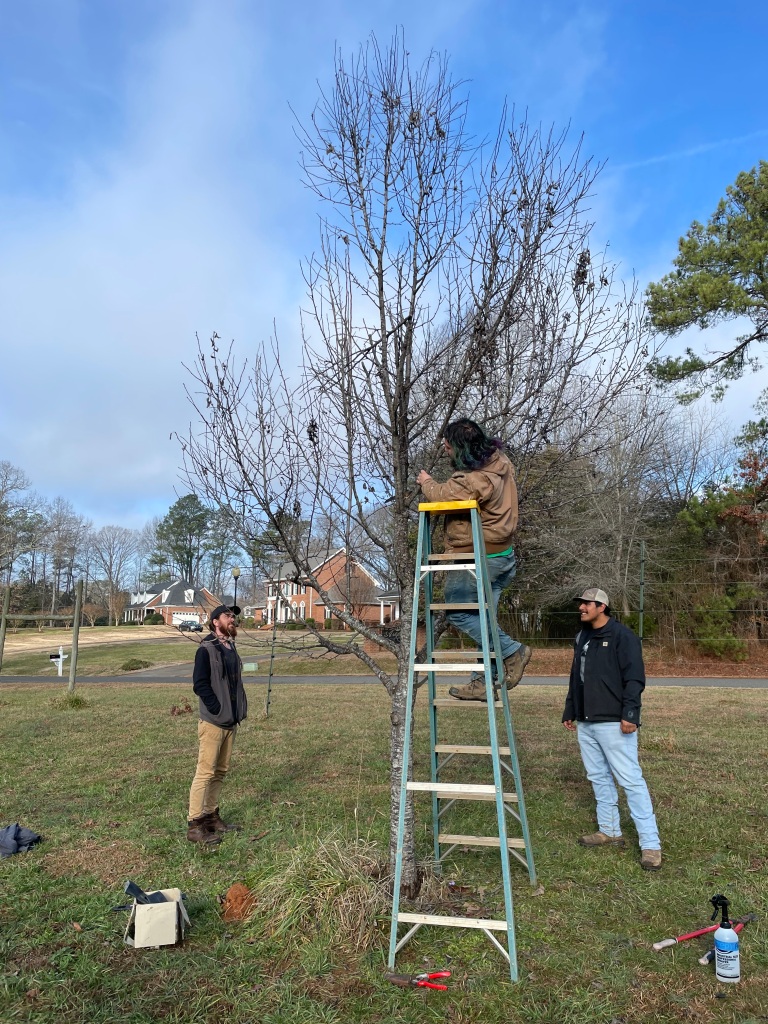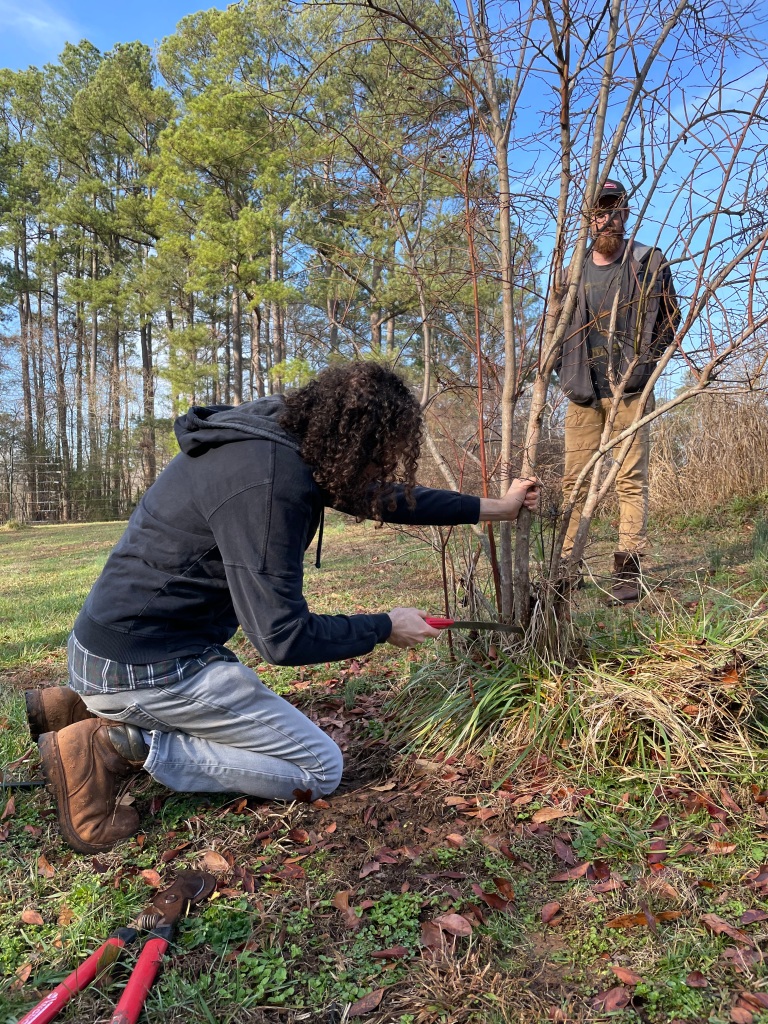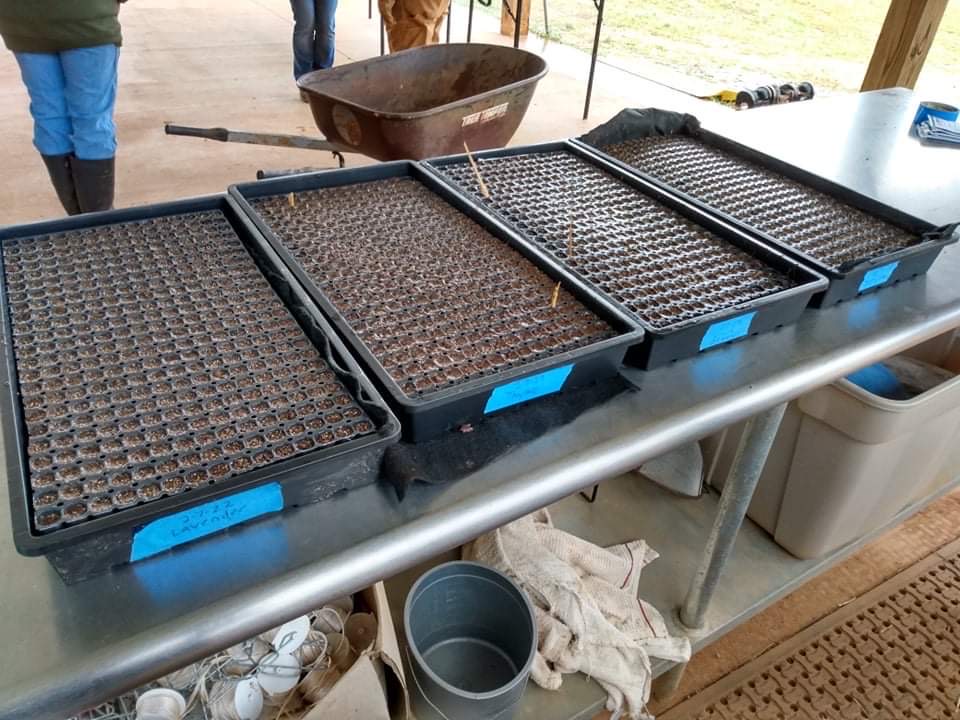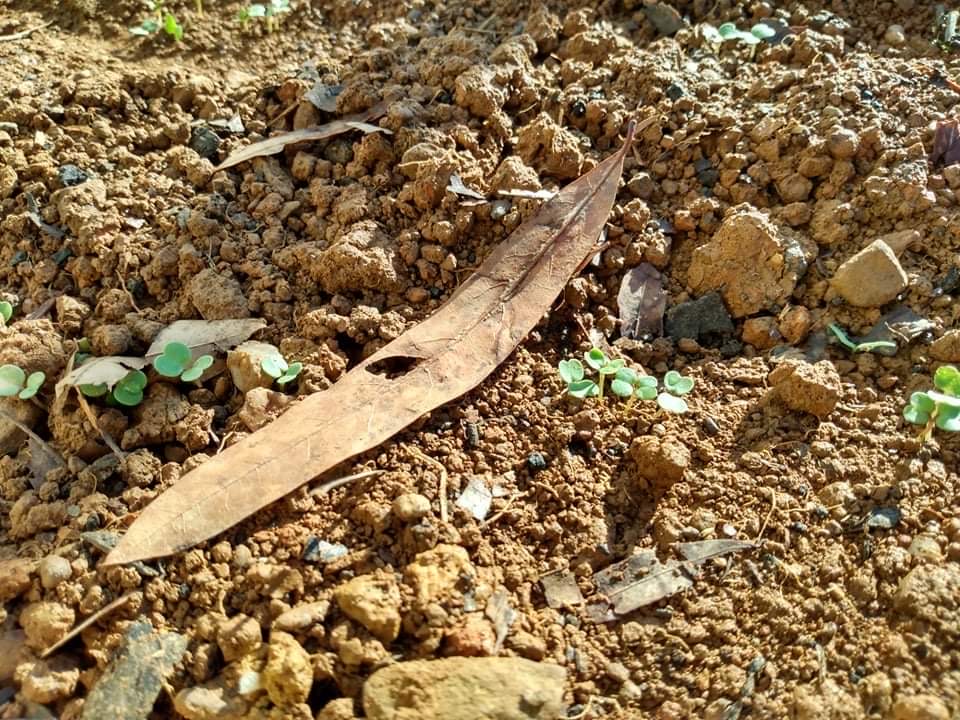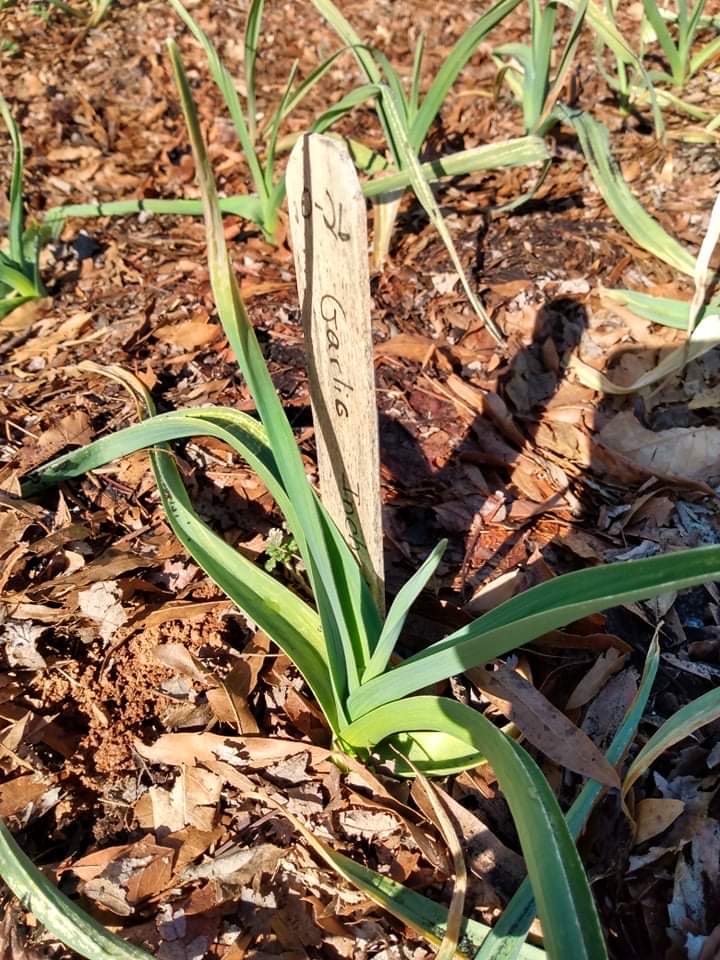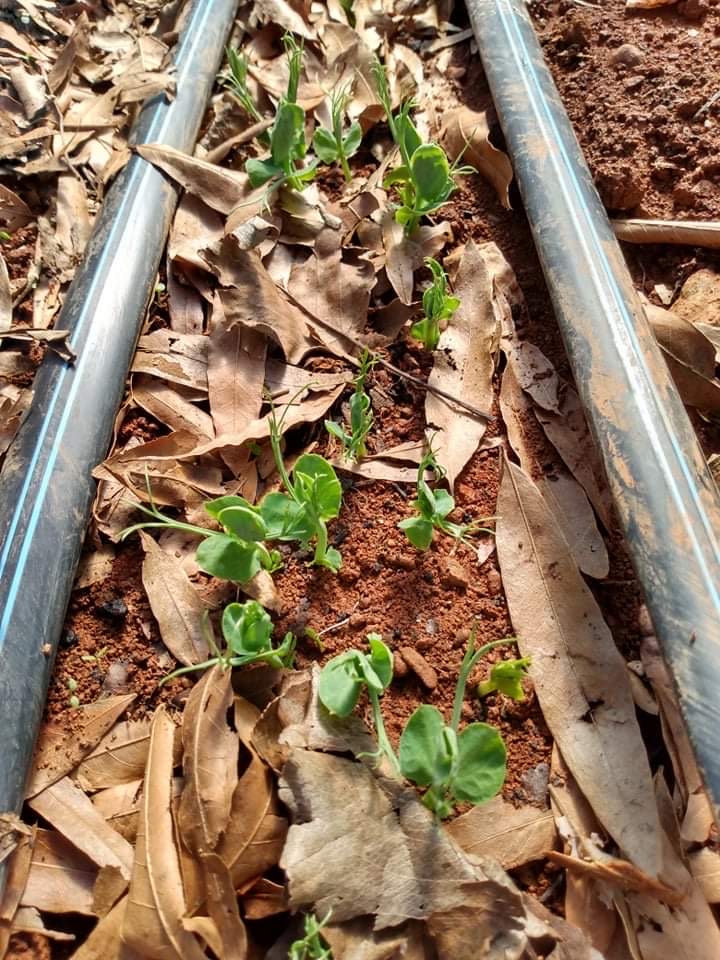It has been an interesting week. The early April weather has up and down as. We only had class Monday April 3 because the school is on spring break. We divided into 3 groups. Some of us were stepping up the baby tomato plants into bigger vegetables cell trays, other group washing what we needed to use for harvest and then harvesting, and last group made sure the wash station was clean.We got over 20 heads of Tatsoi, a bunch of green garlic, asparagus, parsley, dill and spinach. Most of what we harvested was for us to take home and enjoy over spring break. I have enjoyed so many good dinners this week from everything we harvested. It has been really good for my overall health. The asparagus, spinach, and green garlic has such a good taste, so many health benefits and makes the house smell really good when your cooking it.
Like many other leafy green vegetables, tatsoi is high in micronutrients. It is High in calcium, almost twice as milk. Calcium is essential for strong bones, blood pressure and heathly teeth. Tatsoi is also High in vitamin C..
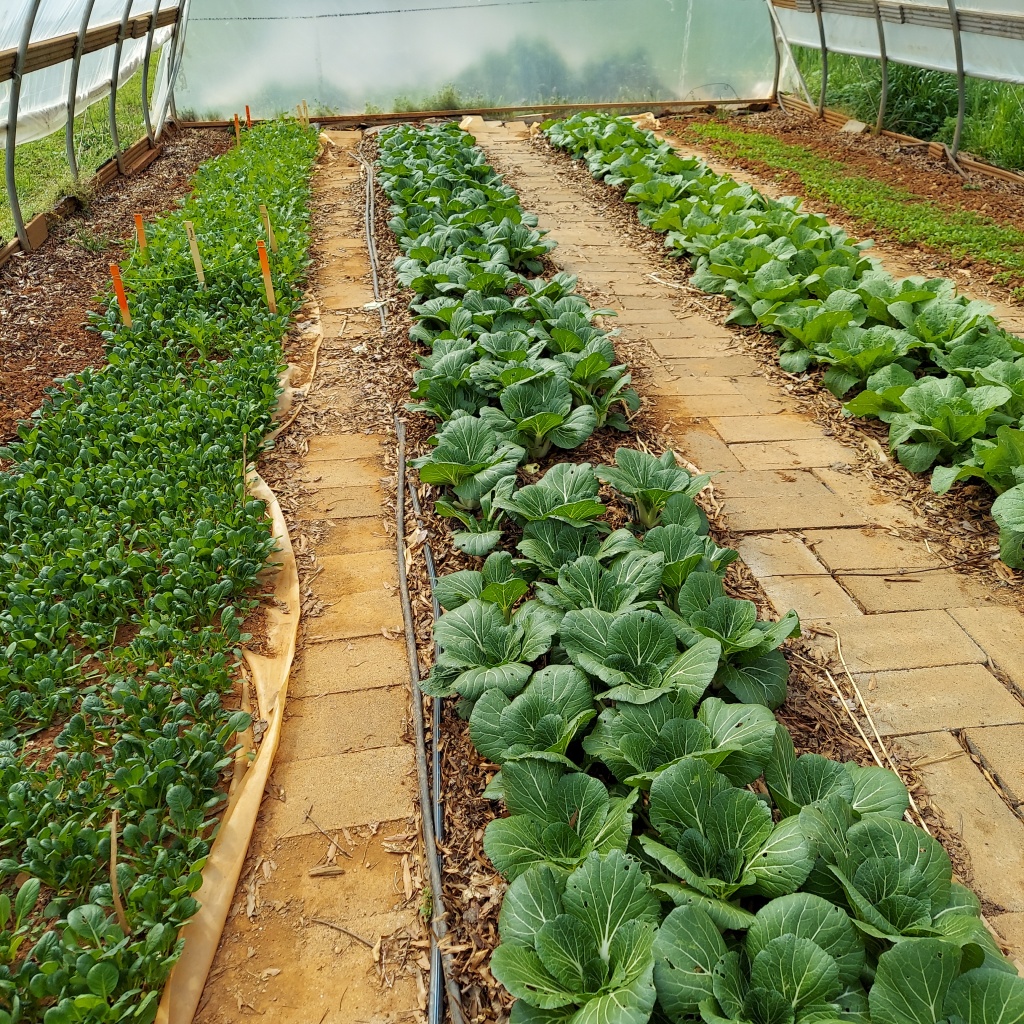
Tatsoi we harvested. The beauty of this farm both on the field and under the tunnels is that nothing is sprayed. It has been over 3 years since an y has happened and our farm manager tries to find natural ways to handle stuff. Observing and reacting to it is key. Asian greens dont have as many pest as some things but brassicas have lots of little bugs coming at them.
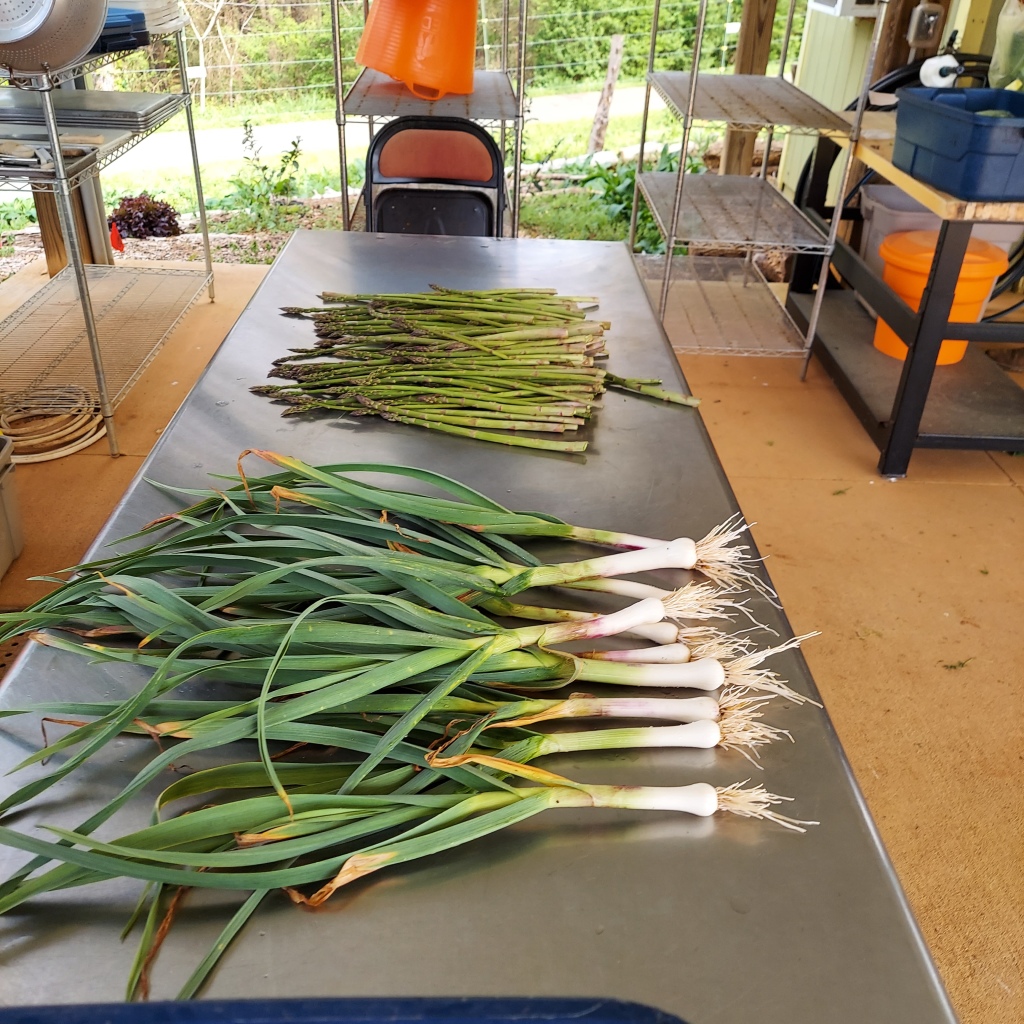
Fresh green garlic and asparagus we harvested on Monday. we worked hard harvested everything as a team and making sure we had some great food to eat. I enjoy doing the prep for the harvest washing everything, getting in rhythm. some people are really on point in the class and great at washing stuff, leading the crew. Our teacher always makes sure we are working hard, and efficiently getting stuff done. It feels real good working with the farm manager, classmates and our teacher. Such a good mix,
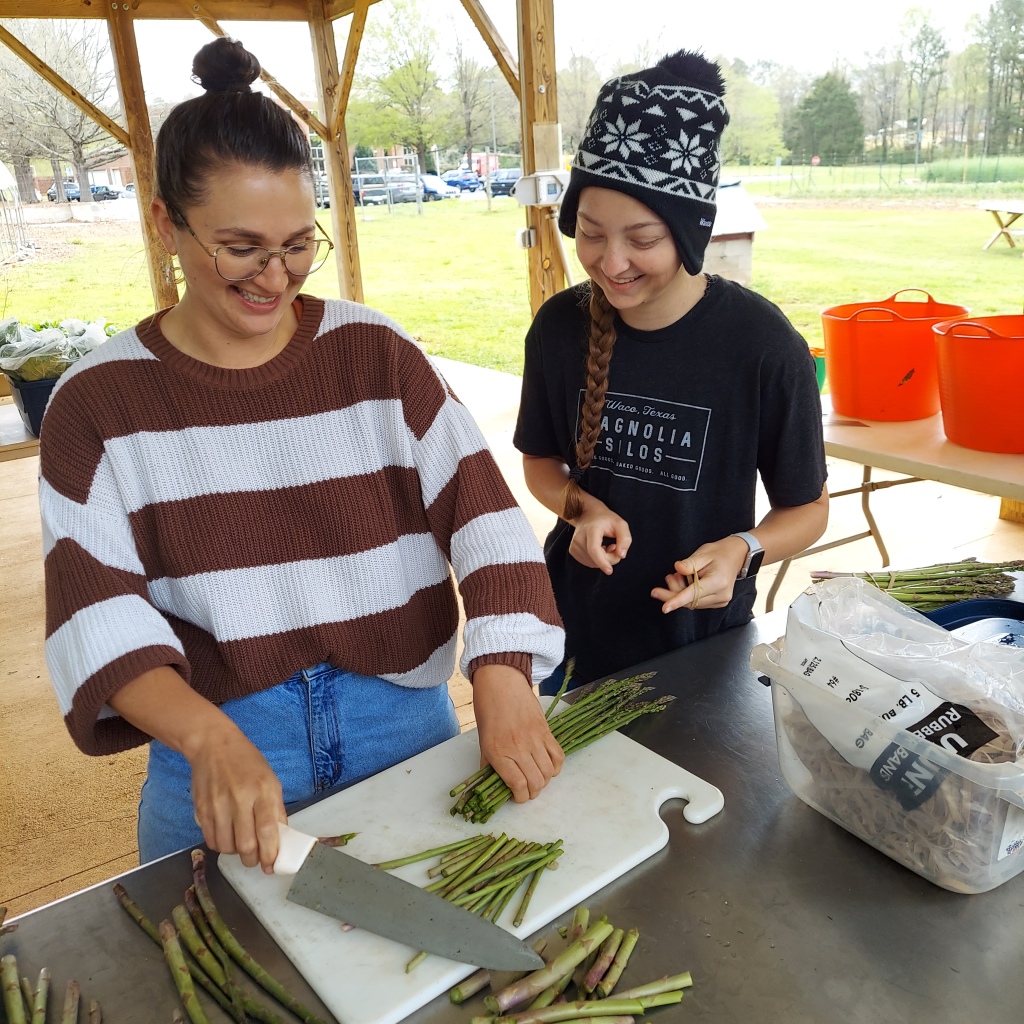
Getting ready to bunch the asparagus crows, Jada and Mikaela work to get it all done before class ended. They did and it was fantastic.
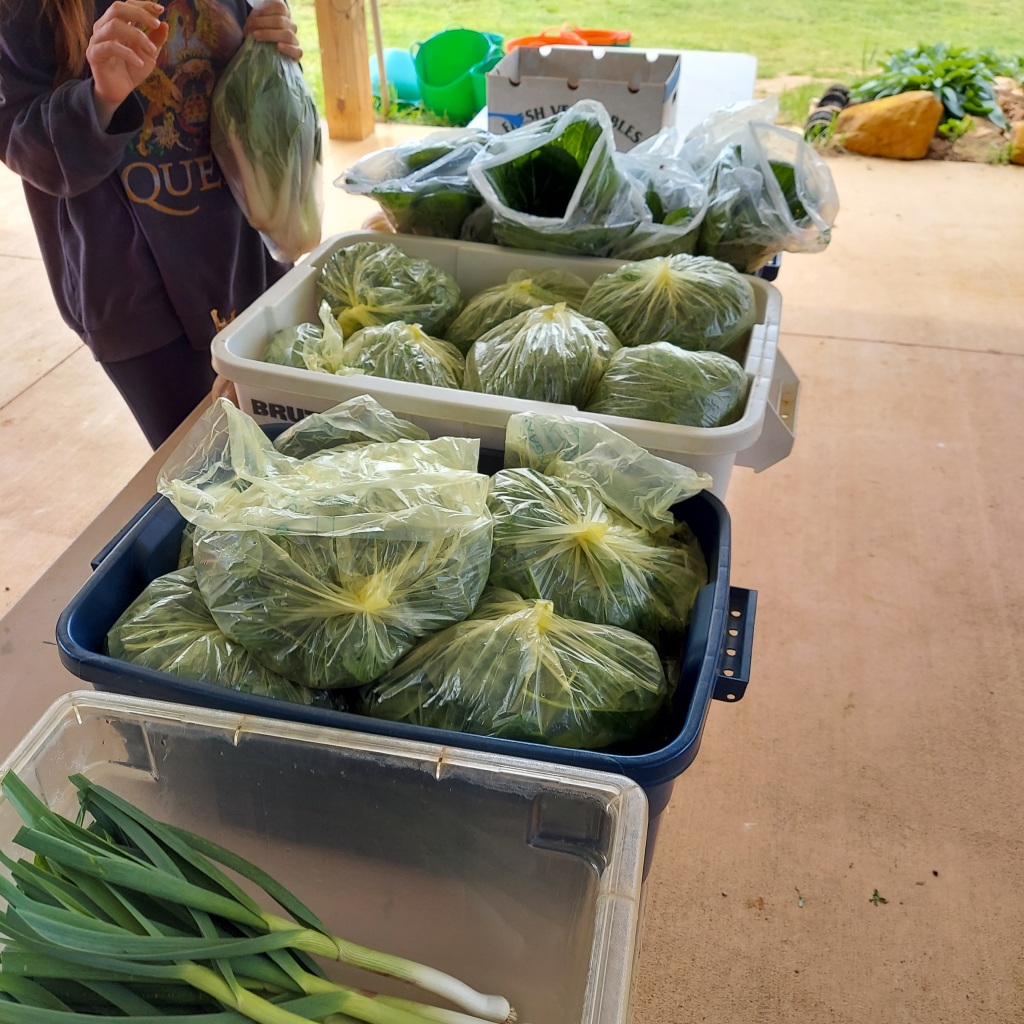
Bagged tatsoi and the green garlic sitting side by side . waiting for us to pickup as class ended.
Stetson Million
